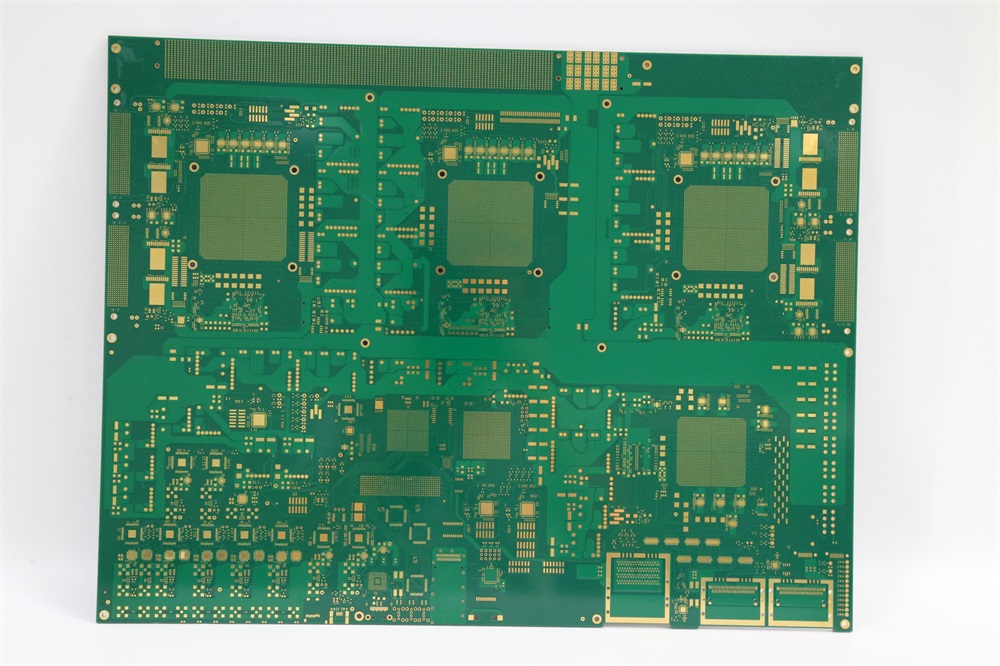Today we bring you a complete version of the production process for circuit boards, hoping to give you a deeper understanding of circuit board production!
Cutting materials
Purpose: According to the requirements of the engineering data MI, cut into small pieces of production boards on large sheets that meet the requirements. Small pieces of boards that meet customer requirements
Process: Large plate material → Cutting according to MI requirements → Curing plate → Rounding corner/grinding edge → Plate discharge
Drilling
Purpose: Based on engineering data, drill the required hole diameter at the corresponding position on the sheet metal that meets the required dimensions
Process: Stacked board pins → Upper board → Drilling → Lower board → Inspection/repair
Sinking copper
Purpose: Copper deposition is the use of chemical methods to deposit a thin layer of copper on the wall of insulating holes
Process: Rough grinding → Hanging plate → Automatic copper sinking line → Bottom plate → Immersion of% dilute H2SO4 → Thickening copper
Graph transfer
Purpose: Image transfer refers to the transfer of images from the production film to the board
Process: (Blue oil process): Grinding the plate → Printing the first side → Drying → Printing the second side → Drying → Blowing out → Film development → Inspection; (Dry film process): hemp board → pressing → standing → alignment → exposure → standing → developing → inspection
Graphic electroplating
Purpose: Graphic electroplating is the electroplating of a copper layer with the required thickness and a gold nickel or tin layer with the required thickness on the exposed copper skin or hole wall of the circuit pattern
Process: Upper plate → Oil removal → Secondary water washing → Micro corrosion → Water washing → Acid washing → Copper plating → Water washing → Acid immersion → Tin plating → Water washing → Lower plate
Debonding
Purpose: To remove the anti electroplating coating layer with NaOH solution and expose the non circuit copper layer
Process: Water film: Insert frame → Soak in alkali → Rinse → Scrub → Passing machine; Dry film: release board → pass machine
Etching
Purpose: Etching is the use of chemical reaction methods to corrode the copper layer on non circuit parts
Green oil
Purpose: Green oil is to transfer the graphics of the green oil film onto the board, playing a role in protecting the circuit and preventing tin on the circuit when welding parts
Process: Grinding plate → Printing photosensitive green oil → Curing plate → Exposure → Development; Grinding board → Printing the first side → Drying board → Printing the second side → Drying board
Characters
Purpose: Characters are provided as easily recognizable markers
Process: After green oil is finally cured, cool and stand still, adjust the screen, print characters, and finally cure
Gold-plated fingers
Purpose: To coat the plug finger with a nickel/gold layer of required thickness, making it more durable and wear-resistant
Process: Board loading → Oil removal → Water washing twice → Micro etching → Water washing twice → Acid washing → Copper plating → Water washing → Nickel plating → Water washing → Gold plating
Tin plate (a parallel process)
Purpose: Tin spraying is to spray a layer of lead tin on the exposed copper surface that is not covered with solder mask to protect the copper surface from corrosion and oxidation, ensuring good welding performance
Process: Micro etching → Air drying → Preheating → Rosin coating → Solder coating → Hot air leveling → Air cooling → Washing and air drying
Forming
Purpose: To create the desired shape for customers through mold stamping or CNC gongs, including organic gongs, beer boards, hand gongs, and hand cutting
Explanation: The accuracy of the data gong machine board and the beer board is relatively high, followed by the hand gong. The lowest tool for hand cutting boards can only make some simple shapes
Testing
Purpose: Through electronic 100% testing, detect defects that affect functionality such as open circuits and short circuits that are difficult to detect visually
Process: Upper mold → Board placement → Testing → Qualified → FQC visual inspection → Unqualified → Repair → Retest → OK → REJ → Scrap
Final inspection
Purpose: Through 100% visual inspection of the appearance defects of the board, and repairing minor defects, to avoid problems and defective boards from flowing out
Specific workflow: incoming materials → viewing materials → visual inspection → qualified → FQA spot check → qualified → packaging → unqualified → handling → inspection OK



